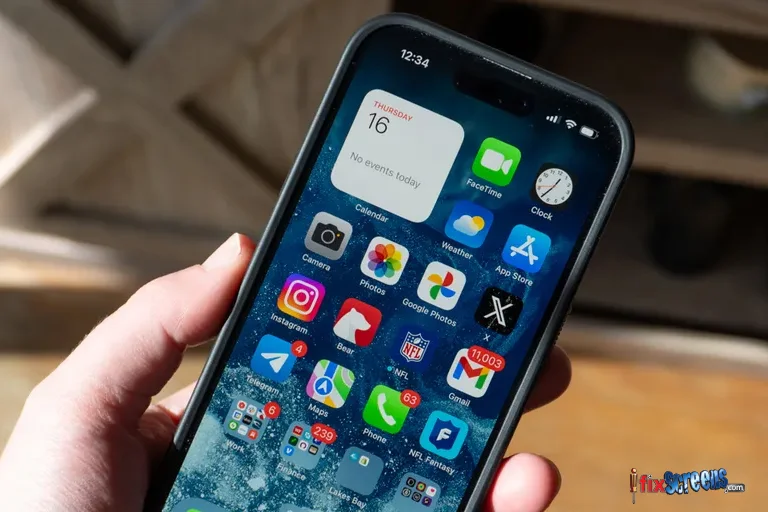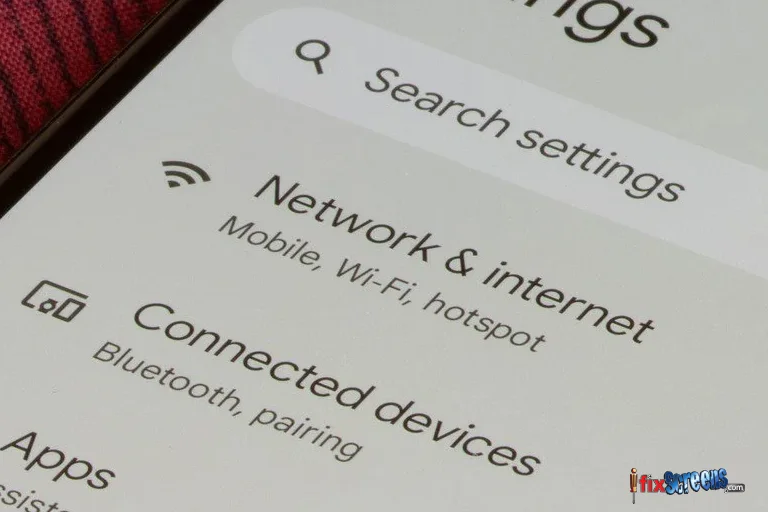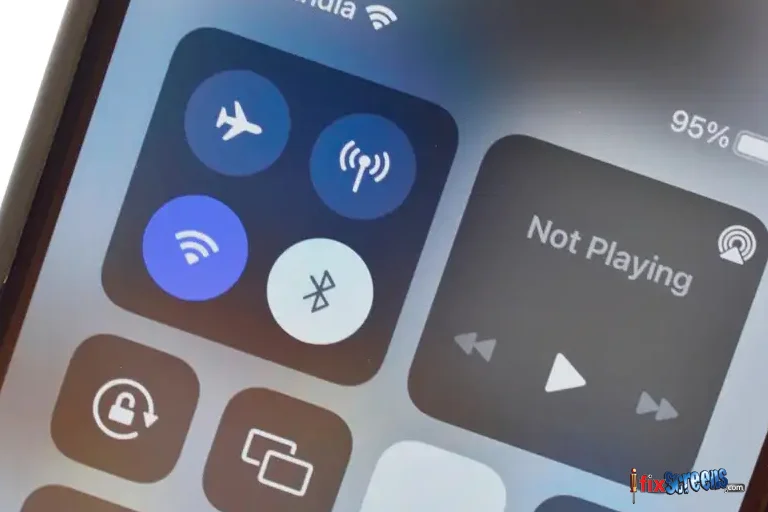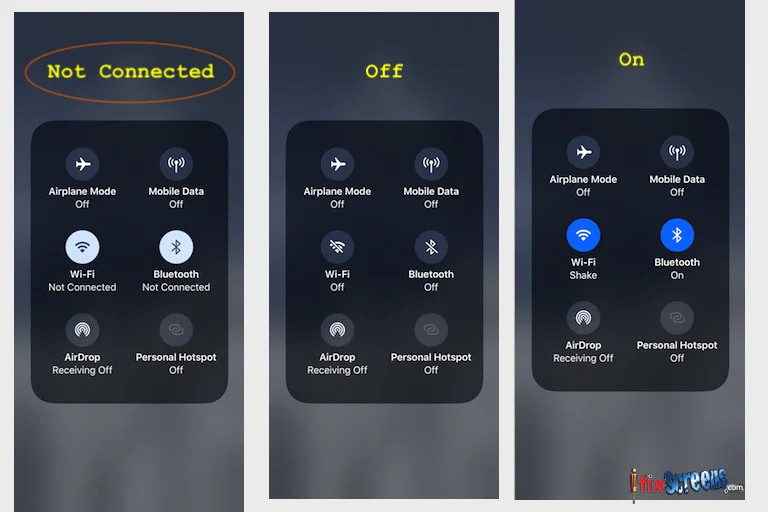For years, iPhone users have been plagued by a misconception: Wi-Fi and Bluetooth drain your battery life significantly.
Many iPhone users struggle with battery life, constantly searching for ways to squeeze those extra hours out of their devices. But what if common beliefs about battery-draining culprits like Wi-Fi and Bluetooth are myths? This myth leads many to constantly turn them off to conserve battery, but here's the truth: you might be hurting your phone's functionality more than helping.
This blog explores the facts behind iPhone battery life, debunking misconceptions and offering practical tips to maximize your time using your phone and minimize the time spent searching for a charger.

Key Takeaways
- Modern iPhones are designed with efficient hardware and software to minimize power usage for Wi-Fi and Bluetooth, especially when not actively transferring data.
- The periodic scanning for networks and devices by Wi-Fi and Bluetooth consumes minimal energy, akin to a quiet listener rather than actively connected power usage.
- Cellular data usage typically consumes more battery than Wi-Fi, making it beneficial to prioritize connecting to Wi-Fi networks whenever possible to conserve battery life.
- Bluetooth usage has minimal power consumption unless actively connected to a device, making its contribution to battery drain negligible compared to other phone functions.
- Common myths about Wi-Fi security concerns are debunked, with iOS implementing measures like randomized MAC addresses and private Wi-Fi addresses to safeguard user privacy.
- Enhanced location services, automatic backups, and seamless connectivity are among the benefits of keeping Wi-Fi and Bluetooth enabled, with minimal impact on battery life.
- Additional strategies to maximize iPhone battery life include managing screen brightness, background app refresh, location services, activating Low Power Mode, nighttime charging, and opting for wired charging over wireless for efficiency.
Why Turning Off Wi-Fi and Bluetooth Isn't Necessary

- Modern Technology: Modern iPhones are built with efficient hardware and software that minimizes Wi-Fi and Bluetooth power, especially when not actively transferring data.
- Scanning vs. Connection: Wi-Fi and Bluetooth periodically scan for networks and devices, but this uses minimal energy (less than one mW). It's like a quiet listener compared to the power needed for an active connection.
- The Real Battery Drain: Cellular data usage consumes significantly more battery than Wi-Fi. If you're concerned about battery life, prioritize connecting to Wi-Fi as soon as possible.
- Bluetooth's Trivial Impact: Bluetooth uses practically no power unless actively connected to a device. Even with a hands-free connection, the battery drain is negligible compared to other phone functions.
Addressing Wi-Fi Security Concerns

Non-existent Hacks: No known hacks exploit Wi-Fi on up-to-date iPhones. Turning off Wi-Fi won't enhance security.
Location Tracking: While some services track location via Wi-Fi address, Apple has implemented solutions:
- Randomized MAC Addresses: iOS sends a random MAC address when unknown networks "ping" your device, preventing location tracking.
- Private Wi-Fi Address (iOS 13+): This feature assigns a unique Wi-Fi address to each network you join, further hindering network-to-network tracking.
Benefits of Keeping Wi-Fi and Bluetooth On

- Enhanced Location Services: Wi-Fi GPS (aGPS) provides location data from Apple's global Wi-Fi database, ensuring accurate location services even without a strong GPS signal.
- Automatic Backups: With the Wi-Fi connected to power, iCloud backups can run daily when your phone is locked. This minimizes data loss in case of phone damage or theft.
Beyond Wi-Fi and Bluetooth: Top Tips to Maximize Your iPhone Battery Life

While Wi-Fi and Bluetooth might not be the battery life demons they're often portrayed as you can use several other strategies to squeeze more juice out of your iPhone; here are some essential tips:
Screen Hogs:
The display is a significant battery drain. Reduce screen brightness (Settings > Display & Brightness) and enable Auto-Brightness for automatic adjustments based on ambient light. Consider enabling "Reduce Motion" (Settings > Accessibility > Motion) to minimize visual effects that can consume extra power.
App Management:
Background app refresh allows apps to fetch new data silently. While convenient, it can drain the battery. Go to Settings > General > Background App Refresh and turn it off for non-essential apps. Additionally, consider quitting power-hungry apps you're not actively using by swiping up on them in the App Switcher (double-tap the Home button or swipe up from the bottom on newer iPhones).
Location Services:
Location services are valuable for many apps, but constant access can drain your battery. Go to Settings > Privacy > Location Services and review app permissions. Consider enabling location services only "While Using the App" for apps that don't require constant location tracking.
Low Power Mode:
When your battery dips low, activate Low Power Mode (Settings > Battery) to temporarily reduce background activity, mail fetch, and visual effects. This can significantly extend your battery life until you can reach a charger.
Nighttime Charging:
Whenever possible, plug your iPhone in before bed. Modern iPhones with iOS 13 and later have Optimized Battery Charging, which learns your charging routine and delays charging past 80% until just before you wake up, reducing stress on the battery.
Wireless Charging Convenience:
While convenient, wireless charging can be slightly less efficient than wired charging. If maximizing battery life is a priority, opt for a wired connection whenever possible.
Final Thoughts
Leave Wi-Fi and Bluetooth on! They offer valuable features while using minimal battery compared to cellular data or screen usage. Utilize the solutions for Wi-Fi safety concerns and enjoy your iPhone's seamless connectivity.
While Wi-Fi and Bluetooth may not be the battery villains they're often made out to be, you can use specific strategies to extend your iPhone's power. By understanding how background app refresh, screen brightness, and location services impact battery life, you can make informed choices to optimize your device's usage.
Tools like Low Power Mode and nighttime charging can protect against a dwindling battery percentage. So ditch the myths, say Yes to a holistic approach to iPhone battery management, and enjoy the freedom of a device that keeps up with your busy life. After all, shouldn't your phone be a tool that empowers you, not one that leaves you constantly searching for a power outlet? Now, conquer that to-do list with a fully charged iPhone!
FAQ's
Q. Do Wi-Fi and Bluetooth drain your iPhone battery?
A. Wi-Fi and Bluetooth can contribute to the drain of your battery life if left on and in constant use. However, the phone can also turn these features off to save the battery in certain situations.
Q. Should we leave Wi-Fi and Bluetooth on or turn them off to save the phone battery?
A. There is a myth that Wi-Fi and Bluetooth should always be disabled to save battery. However, modern battery management systems and device manufacturers recommend keeping these features on if you frequently connect to data or Bluetooth devices.
Q. Can keeping Wi-Fi and Bluetooth on drain your phone battery much faster?
A. While Wi-Fi and Bluetooth can draw power and slightly reduce the battery life, the amount of energy consumed is minimal and won't usually result in a significant battery drain unless there is a problem with the feature or device.